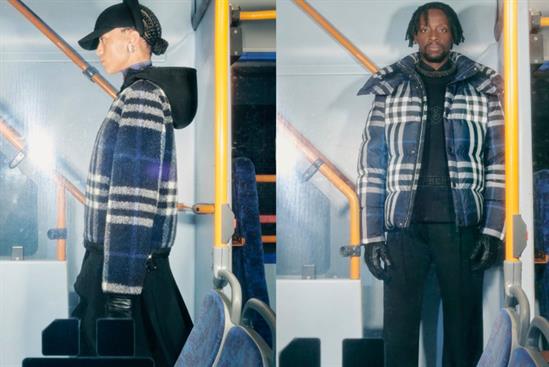

Brand
Burberry
-
Established
1856
-
Number of staff
10,800
-
Head office
London, UK
-
Sector
Fashion
Burberry "Creative expression" (in-house)
Burberry "Year of the rabbit"
Burberry "The night before"
Burberry "Night creatures" by Megaforce
Burberry "Autumn/Winter 2022 campaign" by in-house
Milestones
About Burberry
Burberry is named after the entrepreneur who created it, Thomas Burberry. He set up the brand in 1856, aged 21, when he opened its first outlet in Basingstoke. It wasn’t until 35 years later that the first Burberry store opened in London, followed by its first Parisian store launch in 1909.
Even at this early stage, Burberry enjoyed ‘celebrity’ connections. In 1897, Major Frederick George Jackson, famous for exploring the Arctic Circle, endorsed the brand’s clothing, while in 1910 aviator Claude Grahame-White was pictured wearing the label. Famous Polar explorer Ernest Shackleton was another Burberry patron, and in 1911, Burberry not only supplied the clothes to Roald Amundsen’s South Pole expedition team, but also its tents.
At that time, Burberry was known for its functional credentials, rather than fashion, with Thomas Burberry inventing the weatherproof fabric gabardine in 1879. Such was the durability of the clothing that during the First World War, the brand’s weatherproof coats were adapted to meet the needs of military personnel, and the trench coat was born. Burberry began to cater to women too, with both stylish and practical ensembles. By the 1920s these included winter-sports apparel, available in an array of bright colours. Throughout the 1920s and moving into the 1930s, the brand continued to offer sporting clothes combined with a more sophisticated, fashion-led approach.
It also began a tradition of using renowned photographers, such as David Bailey in the 1960s and Lord Lichfield in the 1970s and 1980s, alongside high-profile British talent, a strategy it has continued to pursue.
One of its challenges has been shifting from this functional heritage to a greater fashion focus. This transition was smoothed by the appointment of New Yorker Rose Marie Bravo, from Saks Fifth Avenue, as chief executive in 1997. She is widely credited with turning around the brand’s fortunes. Key pillars in her strategy proved to be hiring Burberry’s current chief creative director, Christopher Bailey, as design director in 2001, and the spotting of the then up-and-coming model Kate Moss to front the brand’s advertising, which targeted a more youthful audience. .
Bravo did such a good job of making Burberry the British must-have brand that suddenly it was everywhere, particularly its trademark beige, black and red check. Ironically, its ubiquity then became a major challenge. It seemed to lose its sense of sophistication somewhat, with commentators even dubbing it the “chav” brand and some pubs banning customers who sported the check, prompting Burberry to scale back on the pattern significantly and to cease production of lower-ticket items such as baseball caps.
In 2006, Angela Ahrendts was appointed as CEO. In 2013 Christopher Bailey took over the role as chief creative director and CEO.
Recently about Burberry

BUSINESS DETAILS
Horseferry House, Horseferry Road, London SW1P 2AW
www.burberry.com
KEY PEOPLE
Sarah Manley, CMO
Simon Gresham Jones, global vice-president digital marketing
Alice Delahunt, global director of brand marketing and social media
MAIN AGENCY ROSTER
Vizeum
Bartle Bogle Hegarty (BBH)
Postercope
Isobar
iProspect
Brunswick Group















